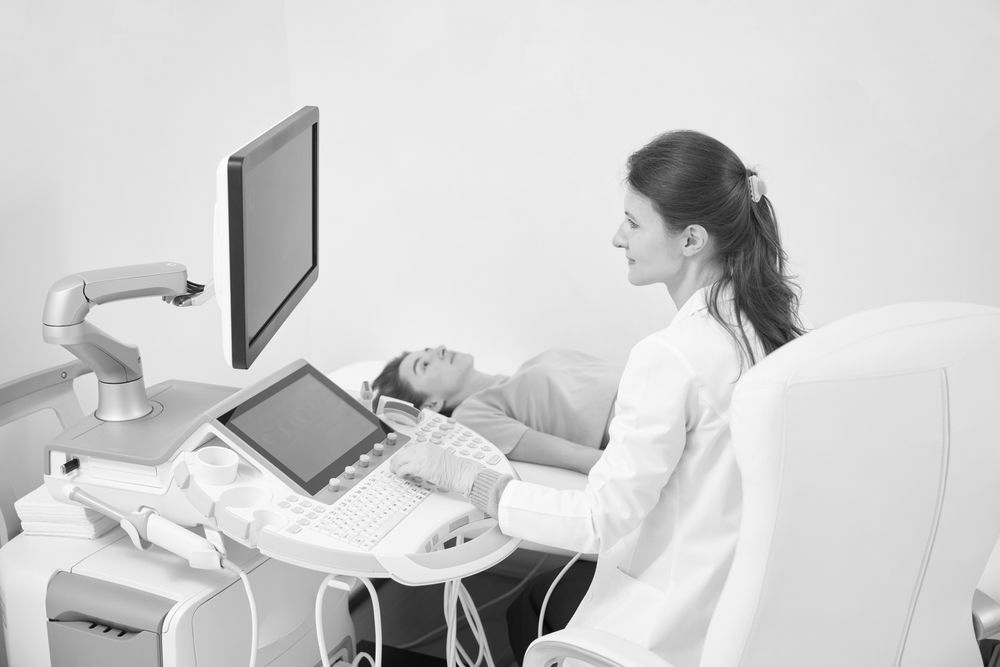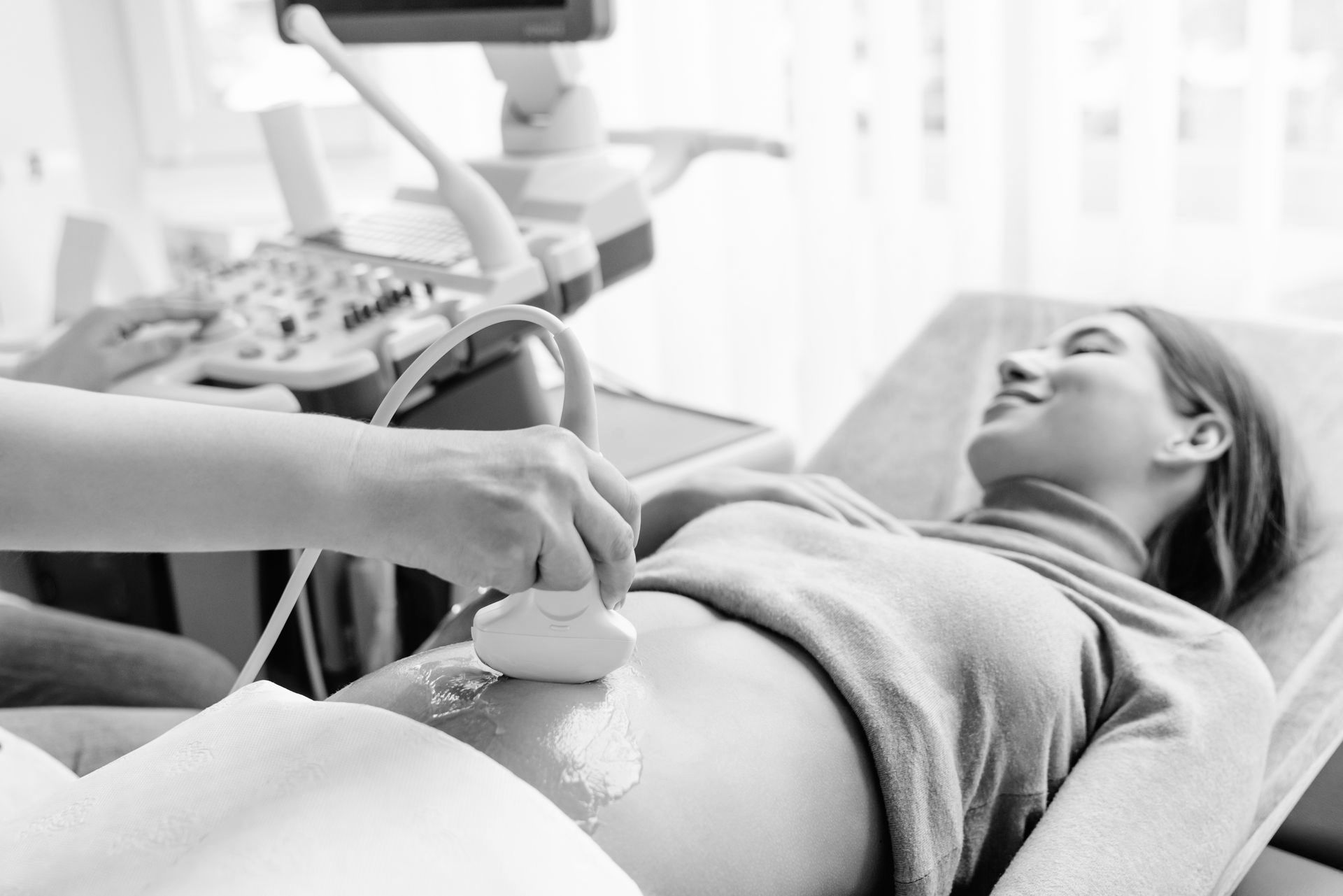Understanding Pregnancy Ultrasounds
Share this Article:

A pregnancy ultrasound is a test that uses high-frequency sound waves to produce images your healthcare providers can view on a computer monitor to give them information about your pregnancy. You might be wondering why a pregnancy ultrasound is necessary if you have not yet made a decision about your unexpected pregnancy. Ultrasound is beneficial because the images provide your medical team with important data, and this knowledge can give you the facts you need to make an informed decision about your pregnancy.
Types of Pregnancy Ultrasounds
Pregnancy ultrasounds include transabdominal, transvaginal, Level 2, 3D, doppler, and fetal echocardiography ultrasounds.
After a positive pregnancy test, you will likely receive:
Transabdominal ultrasound
Gel is placed on your abdomen, and a roller-like device (transducer) is moved over the gel on your abdomen. The transducer picks up soundwaves that produce images onto a computer screen.
Transvaginal ultrasound
A special, smaller transducer probe is lubricated with gel and gently placed into your vagina to obtain images. Transvaginal ultrasound is used primarily in early pregnancy.
Ways a Pregnancy Ultrasound Is Useful
To Determine Pregnancy Viability
Even if you have already decided upon abortion, you will need to know if your pregnancy is viable. A positive pregnancy test result tells you that the hCG pregnancy hormone was detected in your urine. However, it does not mean you have a viable pregnancy.
According to the March of Dimes, as many as half of all pregnancies end in miscarriage: 80% of those occur in the first trimester — or the first twelve weeks. So, after a positive pregnancy test result, you will need to confirm your pregnancy is viable by ultrasound. A viable pregnancy is one that is expected to continue and result in childbirth (if no other steps are taken).
If no fetal heartbeat is detected, you would not need an abortion but would be referred for medical treatment instead.
The location of your pregnancy also impacts viability. If your healthcare provider detects a heartbeat by ultrasound, but the pregnancy is located outside of your uterus (i.e., in the fallopian tube), your pregnancy is also not viable. An ectopic pregnancy, a pregnancy implanted in the fallopian tube, is a medical emergency and requires immediate intervention.
The fetal heart rate also impacts the viability of your pregnancy. Research reveals that if an ultrasound detects a very low heart rate, called embryonic bradycardia, the rate of miscarriage is significantly higher. If embryonic bradycardia is identified during your ultrasound appointment, you will likely be asked to return in about a week to repeat the test.
To Determine How Far Along You Are in Your Pregnancy
An ultrasound can accurately measure how many weeks pregnant you are. You can’t count on using only menstrual dates for accuracy because many women experience period-like bleeding while they are pregnant.
If your pregnancy is unexpected, and you are still gathering information about how you will proceed, you will need to know how far along you are because your options will partly depend on that.
To Determine If You Have a Single Pregnancy or Multiple Pregnancy
An ultrasound can also give you a valuable indication that you might be carrying a single or multiple pregnancy.
Get the Answers You Deserve
If you have had a positive home pregnancy test or think you might be pregnant, contact our compassionate team at Willow Womens Center. We provide licensed professional medical care, including pregnancy testing and ultrasounds at no cost to you. Reach out today by calling 608-312-2025 or by using our online scheduler.
Connect with Us:












